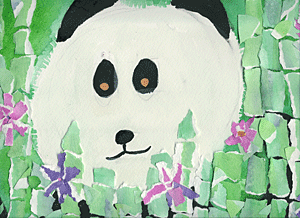
Teaching the Monart method since 1990 805.544.4243
|
Monart Method
The Monart Drawing Method is able to help build and support a healthy, positive sense of self-esteem in students through its non-competitive, non-judgmental and educational environment. All of the students become aware of several key thoughts very early in their artistic careers, which helps to eliminate negative and worrisome feelings about their drawing skills. Some of these key thoughts are: 1. Drawing is a teachable skill at which everyone can be successful. The Monart Drawing Method works from an academic viewpoint, showing students how to take things apart and put them back together. Whether they like their drawings or not, students have now acquired the skills and knowledge of how to draw and can practice drawing as much as they want. 2. You don't have to wait to grow up to be an artist. Many adult artists have attempted to capture a childlike essence or energy in their art. They are inspired by the children's free use of color, shape, symbols, etc. This simple truth speaks to the importance and validity of children's artwork.
3. It's OK if you don't like your artwork. Many professional artists do not like everything they create and will even throw artwork away. Monart students are encouraged and taught how to figure out what they do and do not like about their drawings, so they can make some changes the next time they draw. This process teaches students to be realistic in achieving their skills and goals.
5. There isn't a better or best. Each piece is simply different. Rembrandt and Van Gogh are two famous artists with very different styles. One artist is not better than the other. Although a personal opinion might favor one artist over the other, it doesn't make one a good artist and the other bad. They are simply two different artists. The Monart Drawing School teaches its students to respect the artwork of fellow artists/students and how to learn to appreciate the similarities and differences in their work.
6. It is OK to be inspired by another artist and attempt to copy their work. It is a common practice in the realms of higher education for artists to study the line drawings of Durer by drawing his drawings, or to study the paint strokes, or color palette of another artist by attempting to duplicate their works. This process is considered a valid and important learning tool. Creating an original piece of artwork is a wonderful goal to have, but difficult to do if one doesn't have enough information about how to do it or the skills to execute the knowledge. At the Monart Drawing School, everyone is given enough structure to be successful and enough freedom to be creative. |

